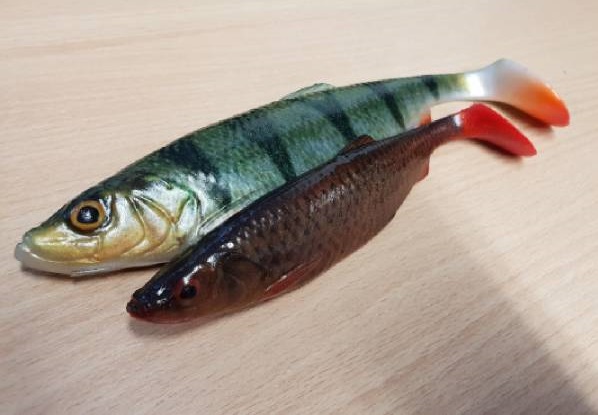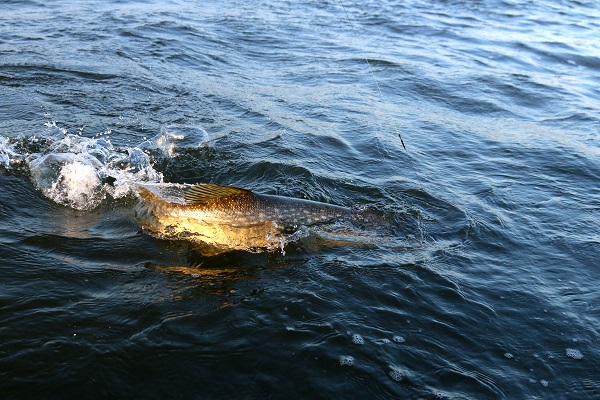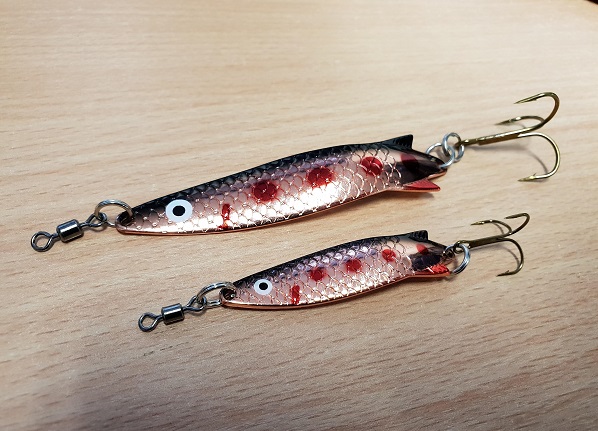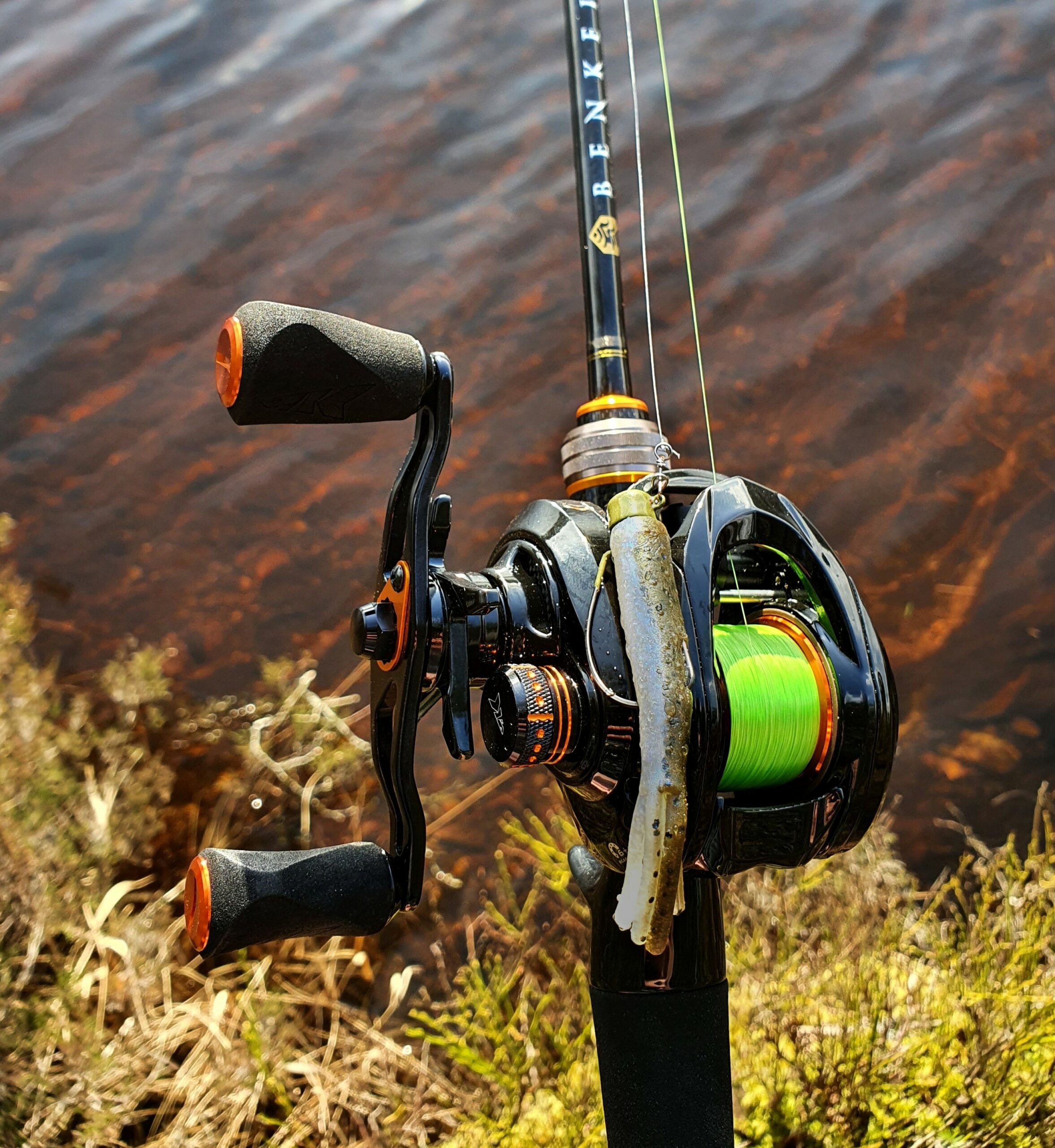BEST PIKE FISHING LURES AND HOW TO USE THEM?
Lure fishing for pike has become very popular over the last couple of years and there’s a good reason why!
Aggressive takes, power lunges, tail walking and menacing follows are a few of the heart-stopping scenarios that you can expect from lure fishing for these freshwater predators.
So with the lure market booming and so many various lures available. Where do you start? Well, in this article, we will cover all the different styles of lures available for pike and how they work.
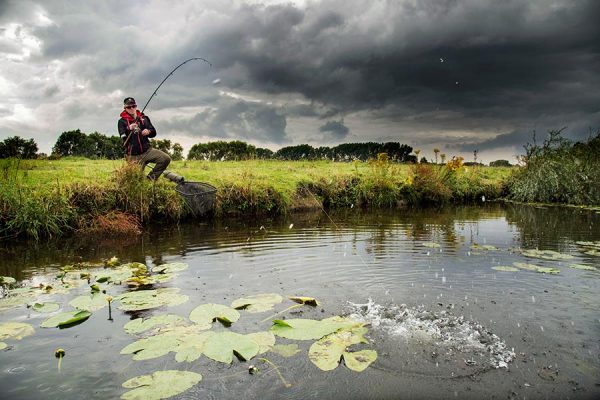
PIKE LURE FISHING SET UP
Firstly, we would recommend pike lure anglers load their reels with a braided mainline. There are a few benefits to this, one it increases the sensitivity of your set up, allowing you to feel the subtlest of takes from lethargic fish. It allows you to impart better action into some of the lure types that we will cover off later on in this article. Higher breaking strain braided mainlines allow you to recover lures that may become snagged and decrease the chances of a break off if you experience a miscast, this can save losing those expensive lures.
A wire leader of 15 inches is required, At one end of the wire leader we will have a swivel which will be tied directly to your braided mainline and on the other end of the wire leader, there will be a crosslock/staylock snap link. These links allow you to change lures easily but provide a secure link to the lure.
Crankbaits, Soft plastic lures, Spinners, Jerkbaits, Swimbait Lures and Surface lures for Pike are some of the lure names you will hear about – So what are they all?
They’re all different styles of lures, that provide various swimming actions.
In writing this article, we wanted to explain the key points anglers are looking for. We’ve broken down each type of lure into three main points to cover:
- how to recognise them?
- where/when you would use them?
- how you would use them?
If you already have a good understanding of the various pike lures available, make sure you check out our top pike lures of 2022 here
Crankbaits for Pike
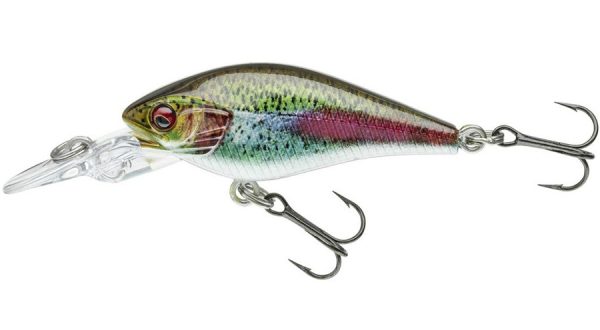
Crankbaits are easily identified by their front diving vane
Recognise:
A crankbait is a wooden or plastic bodied lure that has a built-in plastic or metal lip also known as a diving vane at the front of the lure. These diving vanes come in all different shapes and sizes, these determine the running depth of the lure (how deep the lure will go)

Crankbaits come in three different densities. Either a floating, suspending or sinking model. Floating crankbaits will float on the surface and when you begin to retrieve the lure it will dive. On stopping the lure, it will float back up to the surface. This is ideal for fishing snaggy bottoms or weedy bays, stopping the lure will allow it to float up passed any snags or weed. The other benefit of a floating crankbait is the way it imitates a struggling/dying fish.
The suspending models differ slightly, they are designed to keep you in the kill zone longer, meaning that if the fish are present at a certain depth, the lure can be run at this depth consistently even during the pause as the lure will slowly sink or suspend. Which could be the trigger for a take on that given day.
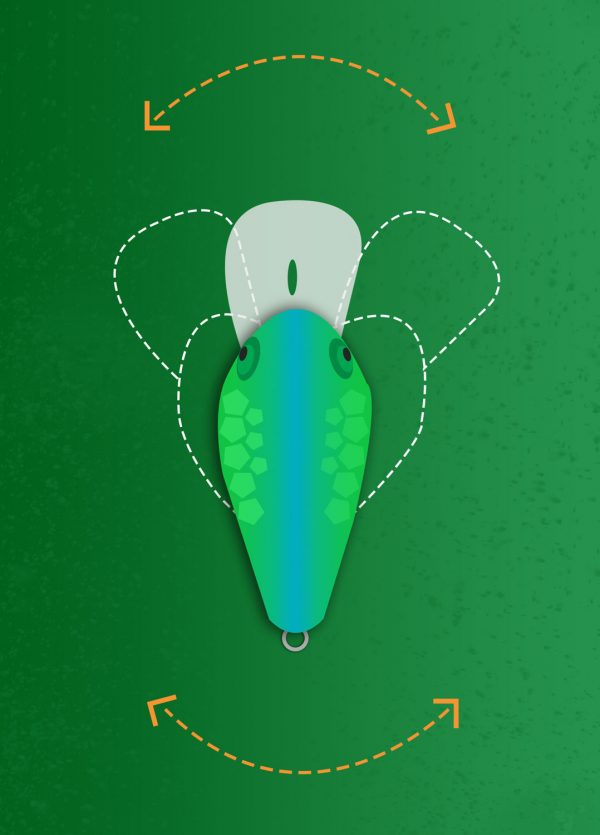
Sinking crankbaits are designed to be counted down to your desired depth and then retrieved back. These allow you to fish nearer the bottom while still maintaining the action of a crankbait. Crankbaits come in either a full body or a jointed body. Both have different actions, the jointed lures usually have a more erratic action than a full-bodied crank. Giving the illusion that the lure is travelling through the water quicker than it actually is. The jointed bodies will also give off more vibration through the water, which can be beneficial when fishing in murky water.
For more added attraction, crankbaits can come with a built-in rattle, made up of ball bearings located in a cavity within the body of the lure. These rattles offer added vibration and sound in the water. As stated earlier, the added noise and vibration can be beneficial when fishing in murkier waters due to the lack of visibility. Pike then have to rely on other senses to find your lure, this is when noise and vibration come into their own.
Where/When:
Crankbaits can be used at any time of the year. Floating versions can be effective over shallow or heavy cover and can even be worked slowly over the surface. While suspending or sinking models can be worked in deeper areas.
How to:
The crankbait is one of the most versatile lures available to any lure angler. It can be steadily retrieved, jerked or trolled.
Steady Retrieve
Cast the lure out and bring back with a steady retrieve, the vane of the lure creates the action of the lure. When any resistance from weed is felt on the retrieve, pause the retrieve to allow the lure to float up passed the structure then continue the retrieve. Adding a pause to the retrieve can be enough to trigger the following fish to take the lure.
Jerk
A retrieval method usually used for jerkbaits, but it can also be used for crankbaits due to their versatility. Cast the lure out. then by continually pulling the rod tip to the side on the retrieve and picking up the slack line with the reel, you will impart a more aggressive darting action from the crankbait. This style of retrieve is ideal for active fish.
Swimbaits for Pike

Swimbaits come with a solid articulated body and are realistic in appearance
Probably the most lifelike action of all the pike lures available. These hard body lures come in 2 or 3 jointed sections. Shaped like a fish they even move like a cruising fish through the water, Like most pike lures, some swimbait variations will come with a built-in rattle. Coming in various sizes and weights, swimbaits are designed to tackle weeded shallow areas to deep drop-offs. Just like crankbaits, floating, suspending and sinking models are available.
Recognise:
Fish shaped with an articulated hard body, mainly made of plastic. They have 2 to 3 joined sections. They swim with an S shape movement, like a cruising prey fish. Equipped with 2 treble hooks.
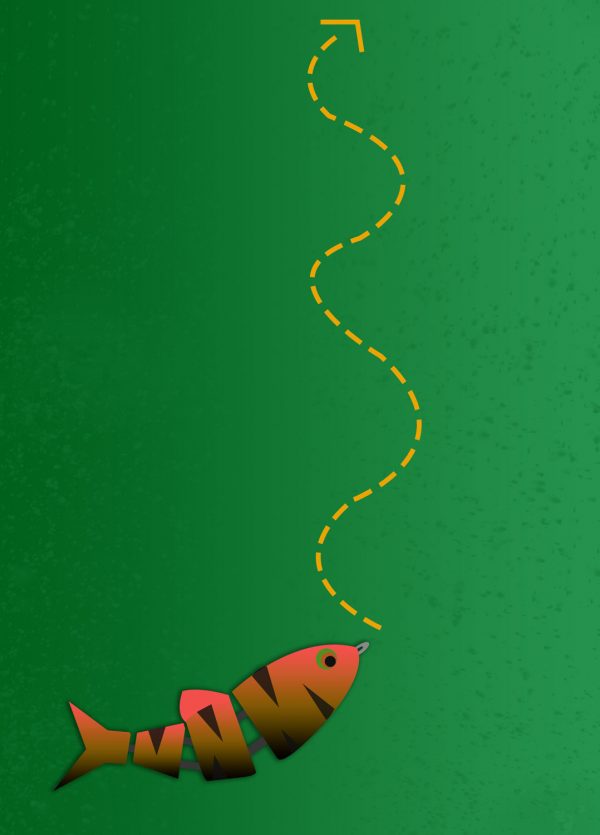
Where/When:
Ideal all year round. Swimbaits come in different sizes and weights to fish in various situations. Making them a very versatile lure.
How to:
A straight retrieve is all it takes to get the best out of these lures. A stop-start retrieve can be thrown into the mix to try and entice a take.
Soft Plastic Lures for Pike
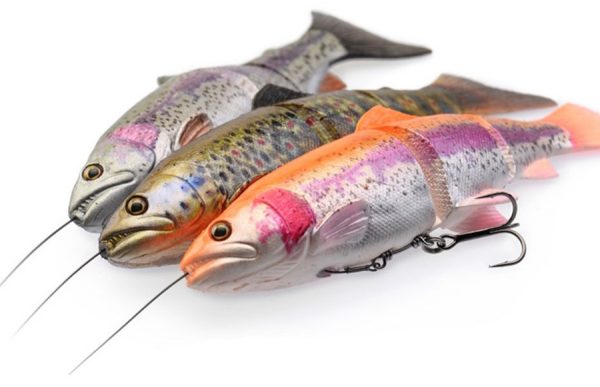
.Soft plastic lures have really taken off in the UK market in recent years, this is due to the influence from the Scandinavian lure market
Soft plastic lures have really taken the pike lure fishing scene by storm recently with innovative 3D scans taken from real fish and printed onto the body of the lure, giving a lifelike appearance and enticing swimming action. Not only that, but these lures can be customised easily to adapt to your fishing conditions, allowing you to fish fast and shallow or slow and deep.
Recognise:
These are soft plastic mould injected lures that can come in various shapes and sizes. The most common shaped soft plastic lures come in either a shad shape (fish-shaped) with a paddle type tail or a large grub which has a wide curly tail. Soft plastic lures come either externally rigged or internally rigged. Manufacturers produce loose body soft plastic lures that consist of just the lure itself and has to be rigged by the individual. Most internally rigged soft plastics are classed as a ‘ready to fish’ lure. Let’s have a look at the difference between the two types of rigging:
External rigging
Introduced by Scandinavian anglers, the lure is rigged externally using either a wire harness or stinger tackle. Both come equipped with one or two treble hooks (depending on the size of the lure) The benefit of external rigging, is it allows you to customise your hook arrangement, it decreases the chances of your lure being torn/ripped up by the fish as the external rig comes away from the lure itself and it also decreases the chances of the fish throwing the hooks by using the weight of the lure to leverage itself. Click here to read our blog on how to rig a soft plastic lure.
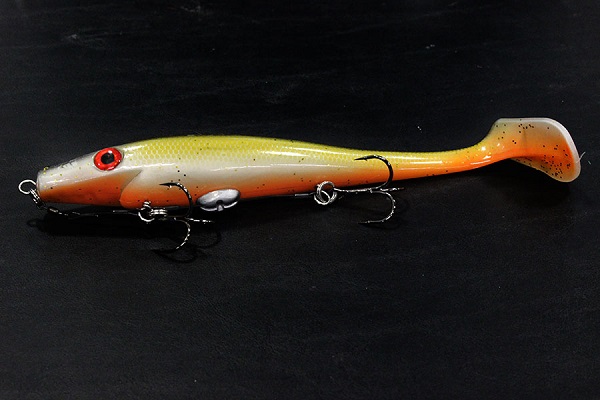
Internal rigging
Internal rigging is when the wire harness is located within the lure itself. This is produced by the manufacturers of the lure. There are a few benefits with internal rigging. The manufacturer can create a very slow sinking lure by adding an internal chamber that they fill with foam. Having an internal rigged soft plastic means its more streamlined in its presentation and has less chance of picking up or holding weed debris etc.
As previously mentioned, loose body soft plastic lures can be customised to your preference. Here are some of the ways you can customise a soft plastic lure:
Screw in weights
Screw in weights come in two different styles, a screw in dot which is a button-shaped lead with a corkscrew attached to it, for screwing into the belly of the soft plastic lure to add weight and can sometimes help the soft plastic lure run straighter if located down the seam of the lure.

Then we have weighted screw in jig heads, that locate on the nose of the lure. Adding weight from the front of the lure, so it sinks head first. These are used in conjunction with external rigging systems.
Internal Rattles
Using fly rattles for fly fishing, you can add noise to the lure by inserting these into the tail of a soft plastic lure.
Where/When:
You would cast out soft plastic lures or trawl them in shallow to deeper water. Choose a sink rate according to the depth of the water you are fishing.
How to:
The method or retrieve for a soft plastic lure is simple. Similar to crankbait fishing explained above, cast it out, let it sink a little to the desired depth and start your retrieve.
Jerkbait Lures for Pike
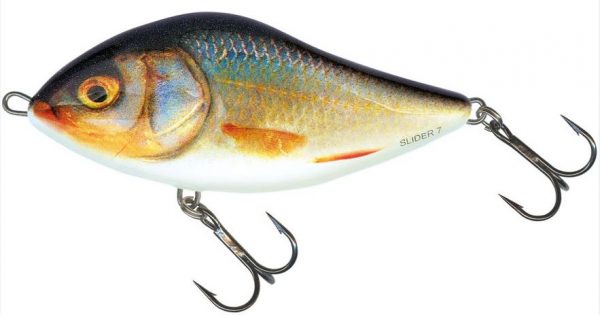
The jerkbait is one of the most rewarding lures to fish. Worked correctly you can have it dancing and darting all the way back to the boat/bank
A basic looking lure, but don’t let that fool you. Jerk baits are one of the most critically balanced lures on the market and have accounted for a number of good fish over the years. Made of wood or plastic, and designed in a fish-shaped profile. These lures are weighted differently to give them their own unique action in the water. Available in floating, suspending and sinking models.
Recognise:
Fish shaped and flat in profile, usually containing two treble hooks. Sometimes containing ball bearings for added vibration and attraction. Made from wood or plastic. Coming in various colourful patterns.
Where/When:
Built for nearly any scenario. Shallow or deep. Ideal for using when fish are active.
How to:
The action is all in the fisherman’s retrieve, by jerking the rod in a downward or sideward motion and using the reel to pick up the slack line. The rod movements impart the action into the lure, which will either glide side to side or dart and dance in a very erratic motion. Jerkbaits are versatile, in the way they can be worked, they can be fished slow or fast, shallow or deep.
Tail baits for Pike
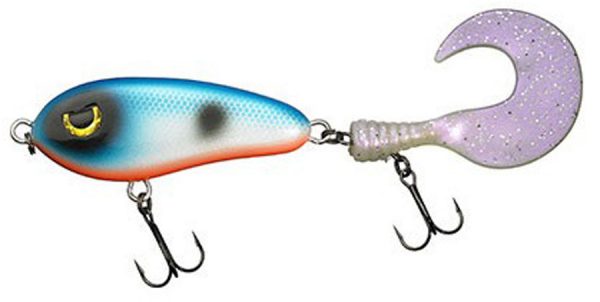
Tail baits are usually overlooked, but they shouldn’t be, they can produce the goods when all else fails.

A pike taken on a tailbait when conditions were tough.
Tail baits are a hard bodied lure with a soft plastic tail. The majority of the action comes from the soft plastic tail that ripples away in the water. The hard body will usually have a subtle rolling action and sometimes will come equipped with a built-in rattle. The hard body can also dictate its sink rate, giving you the option to work a tail bait shallow or deep. Available in suspending and sinking models.
Recognise:
Hard plastic/wooden body with a split ring that connects to a stainless steel wire holder that accommodates a soft plastic tail and the tail treble of the lure. Coming equipped with 2 treble hooks.
Where/When:
Ideal for the colder months, when a slower presented lure is required. Tail baits still provide a very tantalising action even when retrieved at the slowest of speeds.
How to:
A straight retrieve is all it takes to get the best out of these lures. A stop-start retrieve can be thrown into the mix to try and entice a take.

Hybrid lures offer the best of both worlds. Giving you the benefits of both soft and hard bait lures.
Hybrid Lures for Pike
Tail baits can be classed as a hybrid lure. A hybrid pike lure is any lure that is made up of a hard body and a soft plastic lure. For example, a jerkbait with a curly soft plastic tail, a hard body swimbait with a soft plastic paddle tail etc. Available in suspending and sinking models.
Surface Lures for Pike
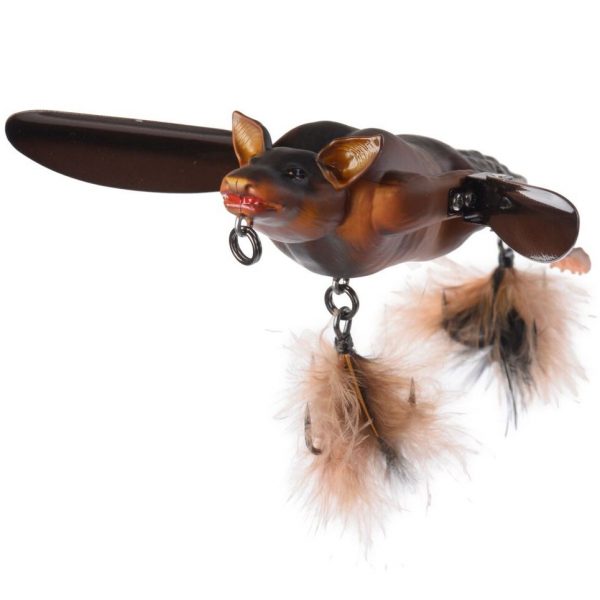
Surface lures can provide adrenaline filled sport on those late summer evenings
Surface action pike fishing can be the ultimate visual fishing experience with heart-stopping takes and adrenaline-filled action.
Recognise:
Designed to imitate a creature that has fallen or are swimming on the surface. They will either have a concaved front to them called poppers, small propeller blades or fins that flap on the water. All three of these variations are designed to create noise and disturbance on the surface of the water.
Where/When:
Ideal for Summer pike fishing in warmer water when the pike are more active and will travel a long way for a lure. Also, use these over heavily weeded areas of water where pike will lie in ambush.
How to:
Any surface lure with a propeller or fins can be straight retrieved. However, poppers require a jerk style retrieve (same as fishing jerkbaits) The takes are explosive! 9/10 times you will see a bow wave approach the lure before the initial take.
Spinners for Pike

The classic spinner has accounted for fish of all species over the years. It deserve its place in any lure box
The most traditional and often deadly lure type for pike fishing.
Recognise:
Mepp blades and spoons are covered under the spinning type. Some have rubber tails, some are rubber bodied, but if it spins in the water it is considered a spinner.
Where/When:
Great for all types of water but colder and deeper water without weed is where spinners perform best.
How to:
A simple cast and retrieve is all that it takes to get spinners moving. There will be a minimum speed for most spinners because they will stall in the water. Being mainly metallic, spinners are great for sinking down quickly to your target depth and fishing down there at a consistent speed or speed up and let the lure rise as you bring it in.
Summary
It’s good to have a selection of pike lures to cover all scenarios and fishing conditions. There will be days that they will only want a specific lure action/lure and in these circumstances, you want to ensure you have all bases covered, so you can maximise your chances of catching.
Want to know what the best lures are for UK Trout or even for Atlantic Salmon? Read some of our other articles or start adding lures to your basket here.

